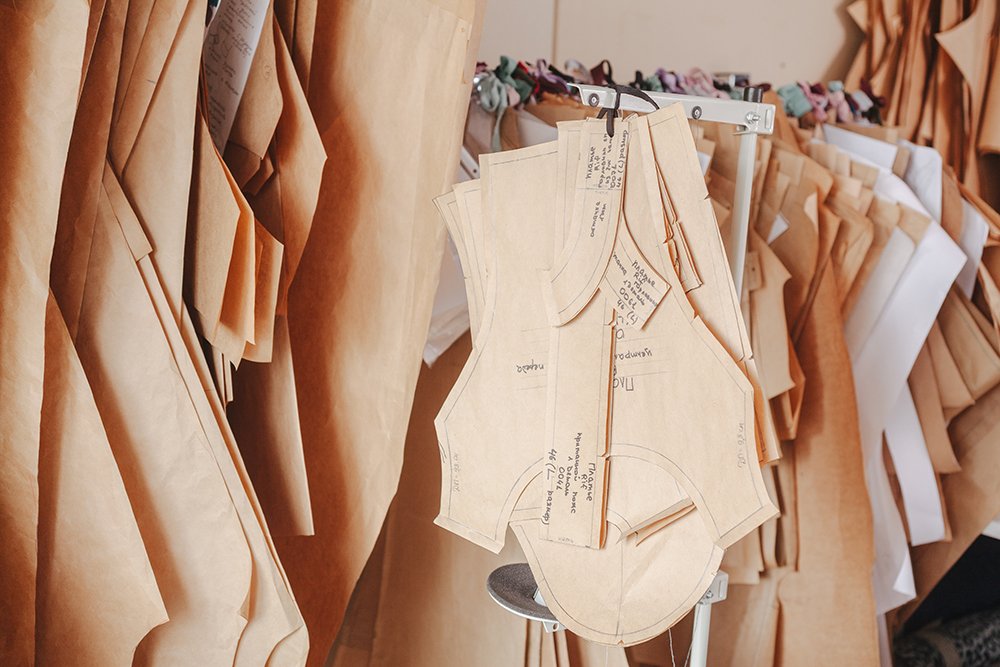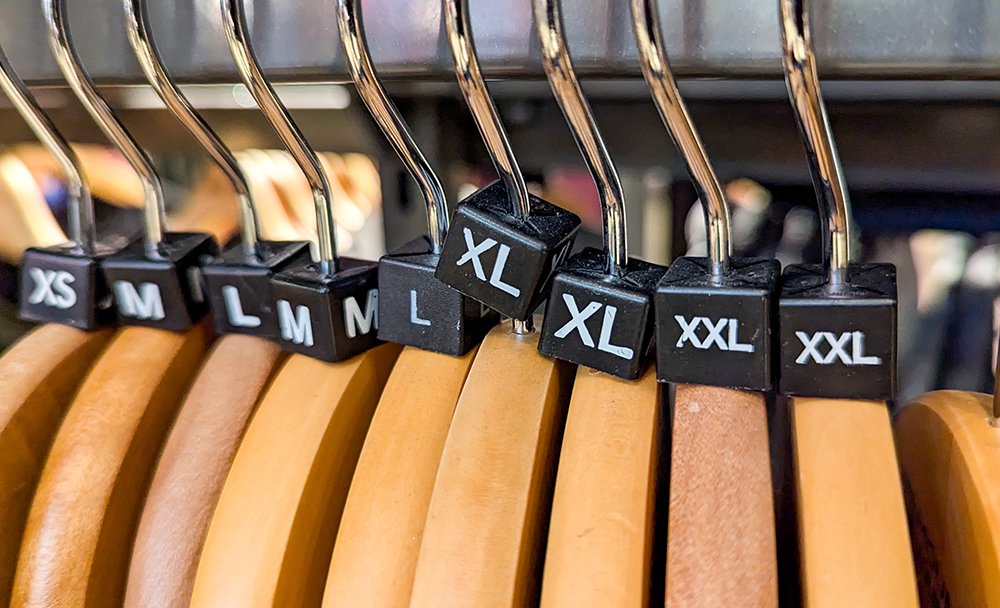Sliding the Sizing- Why Shifting Sizes Won’t Always Fix Your Fit
As a designer, it isn’t always easy to communicate what you want, especially if you are not particularly technical. If a garment just doesn’t feel right it could seem easier to just say I think this is “a medium, not a small”, or “it’s not a 1X, it’s X-large.” This is what I call “sliding the sizing.” In fairness, this is a good starting point for communicating exactly what the problem is. But it does get a little dicey on the pattern making and grading side of things.
I had a boss once that loved to do this to sweaters. It was so easy to put it on and pronounce that she “felt” like it was more of a small than a medium. There was no factual data, just feelings. But the challenge was that we had rigorous standards to be held to. For instance, all size small long sleeve sweaters had to have 23 ½” long sleeves and body lengths for specific silhouettes had to be the set standard for the specific size. Now anyone who has ever knit anything knows, sweaters are very malleable. They can easily be whatever measurement you want. Maybe the sample that we got shrunk a bit after shipment. Totally understandable. They were coming from a hot and humid climate to a very dry NYC workroom in winter.
It was then my job to stress over the measurements, trying to rework all the numbers so the standards were in place but the core measurements of this garment were to be graded up to our sample size medium. But I had it easy! The factory had to do the real number crunching. Once again, for the knitters out there- you know the math involved when your gauge doesn't match. This would be a similar brainteaser.
This generally only addresses widths
The common use of sliding the sizing is based on the impression that a garment is too big or too small in the chest, waist, or hips. What this usually fails to take into consideration are the smaller details. For instance, if you are saying your size medium is actually an Xsmall, then when this “xsmall” is graded back up to a size medium it will be 1” longer, the neckline will be ½” deeper, the sleeves ½” longer, the armhole potentially 1” longer, etc… then the garment you proclaimed was not sized correctly. It’s easy to say “keep the neckline the same for the medium, but lets consider it a size Xsmall. This does sound like a simple fix, but on the pattern makers end, this can get a little twisty. It’s definitely doable but involves a lot of number crunching and mistakes can easily happen.
For pants, when this situation arises, it’s easy to forget that rise lengths grade and so do leg openings. These are key style points and rise heights are often standardized. So when the size small “feels like a medium” and we grade down to the size small, the rises will be ½” shorter on the front and back, whereas they may have been the perfect height on the sample, and going forward they will be lower.
Pattern Grading may need to be reworked
One that is challenging to fix is when the sizing is deemed incorrect after grading (let’s say your size large should be the medium, for example.) If your grade rule is just a 2” difference between sizes across the board, then this is an easy fix, especially in a digital environment. However we run into issues when the incremental increase/decreases between sizes vary. For example, your XS, S, & M are all 2”. But the M to L is 3” and the L to XL is 4”. Just renaming the sizing is not going to do the trick as you will end up with different amounts of wearing ease depending on the size. The goal of grading is to keep the wearing ease consistent. At this point, it’s best to just redo the grading.
Disclaimer- I work in an Optitex environment, where I haven’t found a good workaround for not creating a mess of the sizing in a situation like this. Perhaps other software have more intuitive processes.
Things get even dicer when we go back to the situation where you want to rename the size, but keep certain elements the same as the sample. These situations look simple on paper, but become quite the maneuvers on the back end. For example you like the neckline on your size medium but you want to use the size XL for the main fit of the body and you work with a pattern maker and grader separately. At this point the pattern maker needs to have the XL body and then put the medium neckline on that pattern and then rename it to be a size medium. From here it has to be regraded.
What to do instead
I think at this point I’ve spent a good deal of time explaining and then complaining about the difficulties in these sizing situations. If a designer has given me notes about the sizing and what they want to change and keep in a situation like what has been presented, I can make it happen. I’ve found myself here many, many, many times and made it work.
But I do know that it does get confusing and disorienting. When I find myself in these situations, I’m always very carefully double checking and rechecking the numbers. It’s soooo easy to make a mistake as a pattern maker or grader when this arises. I’m very aware of the potential for screw ups, but someone more novice might not be and your production is then at risk.
You make a lot of investment towards your product as a designer. Everything costs time and money and I feel that anything that isn’t clearly defined or specified is a potential for failure or a mistake. I think that it would be helpful to think in terms of actual numbers that your pattern maker can easily adjust. If you feel that your small is actually a medium, then usually this is about a 2” difference between these sizes so it could be clearer to say that the chest and hip are 2” too big, but the rest of the garment is feeling ok. Pattern makers love numbers. You are speaking our language when you want something 1” longer, instead of “a touch longer”, or reduce the skirt length 3”, instead of “make it a midi”. Specificity defines clear objectives.
I think it’s also best to think in terms of numbers for reduction or increase if a pattern is graded, then the base size can just be adjusted for this change pretty easily and then all other sizes will follow suit. But reworking and sliding the grading could create more work on the backend which could lead to increased pattern costs, more samples, lost time, and the expense of regrading a pattern.


